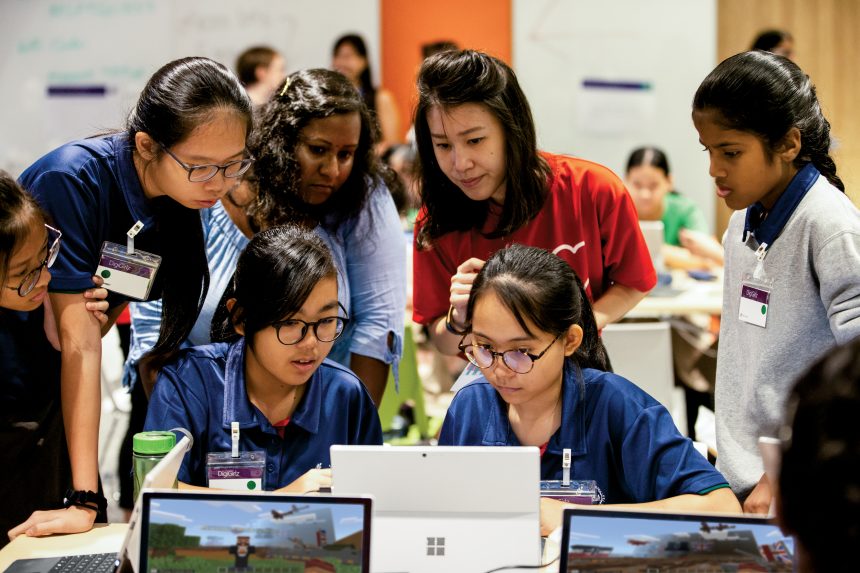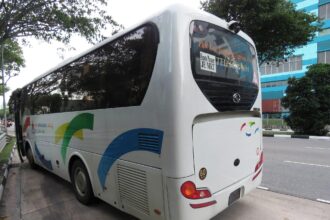Minecraft clubs are popping up at schools all over the world, and for good reason: they’re fun and an amazing way to introduce your students to all the awesomeness of Minecraft. From building magnificent structures to creating custom Minecraft skins, these clubs offer an engaging and educational experience for students. But with the runaway zombies and piles of TNT come many questions for teachers looking to set up a Minecraft club at their schools for the first time. From getting started to making sure the lava runs smoothly, here are some tips for setting up a Minecraft club at your school.
- Gauge Interest and Establish Goals
Before you can set up a Minecraft club, you’ll need to gauge interest among your students. You can start by distributing a simple survey, talking to students during break times, or hosting an informal informational session. This will give you an idea of the number of interested students and their skill levels.
Once you’ve gathered interest, establish clear goals for the club. Goals could include teaching students about game design, architecture, teamwork, problem-solving, or simply providing a fun and creative outlet for them. Having well-defined goals will help you create a structured and engaging club experience.
- Gather Resources and Funding
Next, you’ll need to gather resources and funding for your Minecraft club. This includes purchasing Minecraft licenses for each club member, obtaining computers with the necessary specifications, and securing a dedicated space for club meetings. Reach out to your school administration or PTA to discuss funding options or consider applying for educational grants. You could also look for donations from local businesses or tech companies that may be willing to support your club.
- Choose a Minecraft Platform and Version
Minecraft has several editions and platforms, including Java Edition, Bedrock Edition, and Education Edition. Each platform has its pros and cons, so you’ll need to choose the one that best suits your club’s goals.
Java Edition is best suited for modding and offers access to a wide range of custom Minecraft skins and game modifications. Bedrock Edition is designed for cross-platform play and has a more user-friendly interface, making it great for younger students. Education Edition is specifically designed for use in schools, with additional features that promote learning and collaboration.
Research the features of each version and choose the one that aligns with your club’s goals and resources.
- Set Club Rules and Guidelines
To ensure a safe and enjoyable environment, establish club rules and guidelines. These might include:
- No griefing (intentionally destroying others’ work)
- Respectful communication between club members
- No use of unauthorized modifications or cheats
- Clear expectations about meeting attendance and participation
Make sure to communicate these rules to all club members and enforce them consistently.
- Develop a Club Curriculum
With your goals in mind, develop a club curriculum that incorporates various Minecraft-related activities. You can start with basic building projects and progress to more complex challenges as your club members gain experience. Here are some ideas to include in your curriculum:
- Guided building projects (e.g., designing a house, creating a roller coaster)
- Redstone circuitry lessons (e.g., creating simple machines, working with logic gates)
- Exploring game mechanics (e.g., learning about biomes, crafting recipes, enchantments)
- Custom content creation (e.g., designing custom Minecraft skins, creating resource packs)
- Collaborative projects (e.g., building a city or theme park together)
- Provide Training and Support
As the club facilitator, you’ll need to familiarize yourself with Minecraft’s features and mechanics to provide adequate support and guidance to your club members. There are many online resources, such as YouTube tutorials and Minecraft forums, that can help you learn the ins and outs of the game.
Consider inviting experienced Minecraft players, either from among your students or outside experts, to help mentor and support club members. This will not only enhance the learning experience for less experienced players but also provide leadership opportunities for more advanced students.
- Schedule Regular Club Meetings
Set a regular meeting schedule for your Minecraft club. Depending on your goals and the availability of your students, you might choose to meet weekly, biweekly, or monthly. Consistent meeting times will help keep club members engaged and allow for steady progress on projects and learning objectives.
- Encourage Collaboration and Communication
One of the most valuable aspects of a Minecraft club is the opportunity for students to collaborate and learn from each other. Encourage communication and teamwork by assigning group projects, hosting build challenges, and providing opportunities for students to share their work and ideas. This will foster a sense of community within the club and help students develop important interpersonal skills.
- Showcase Club Achievements
Recognize and celebrate your club’s achievements by showcasing their work within the school or local community. This can be done through school newsletters, social media, or even hosting a “Minecraft Night” where club members can present their creations to parents, teachers, and fellow students. Showcasing your club’s achievements will not only boost morale but also help raise awareness about the educational benefits of Minecraft.
- Continuously Evaluate and Adapt
As your Minecraft club progresses, continuously evaluate its success and make adjustments as needed. This might involve tweaking the curriculum, seeking additional resources, or addressing any challenges that arise. Regularly soliciting feedback from club members and staying in tune with their needs and interests will help ensure a successful and engaging club experience.
In Conclusion
Setting up a Minecraft club at your school can be an exciting and rewarding endeavor. By following these tips and maintaining a human, friendly, and informative approach, you’ll create an engaging and educational experience for your students that will introduce them to the wonderful world of Minecraft. With time, dedication, and a little bit of creativity, your Minecraft club will become a beloved and valuable addition to your school community.















